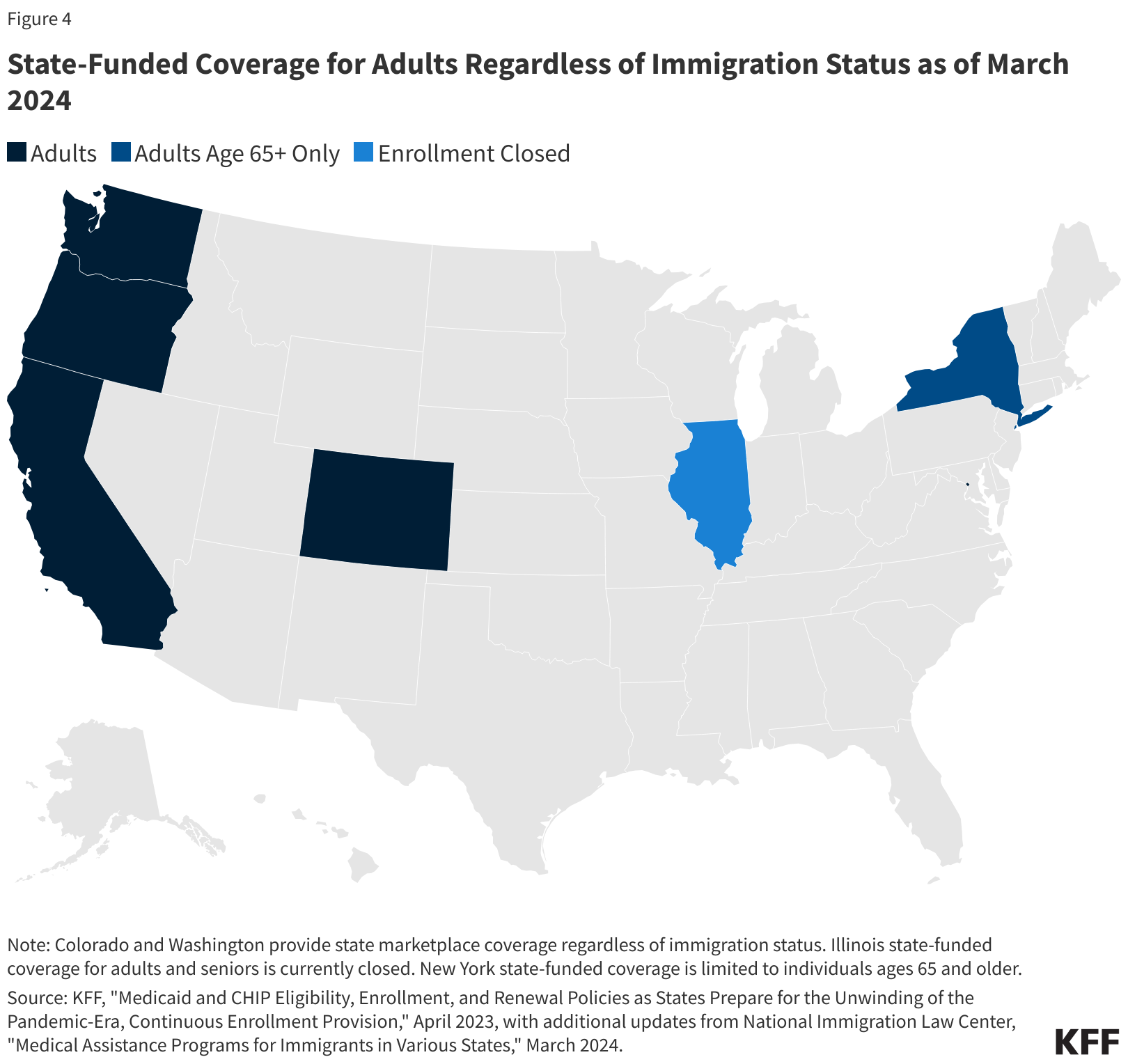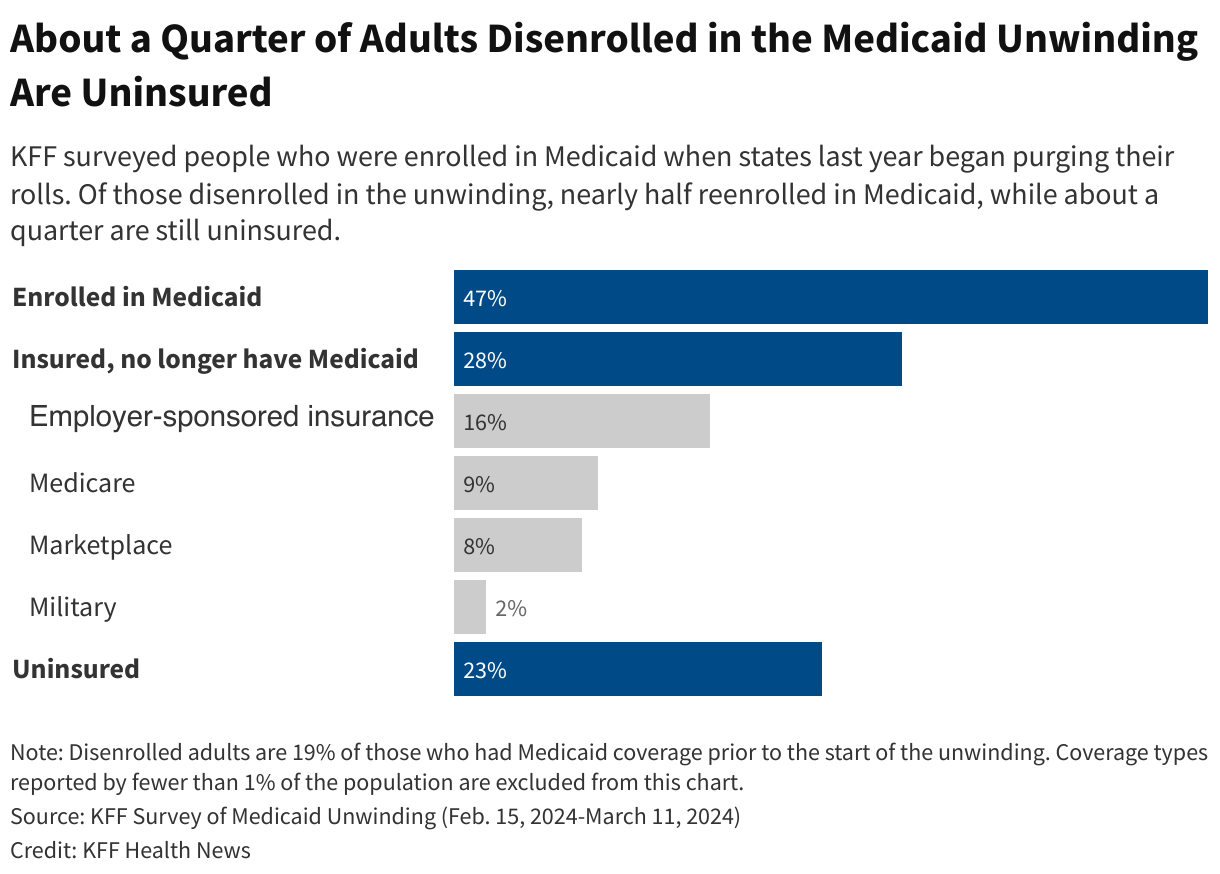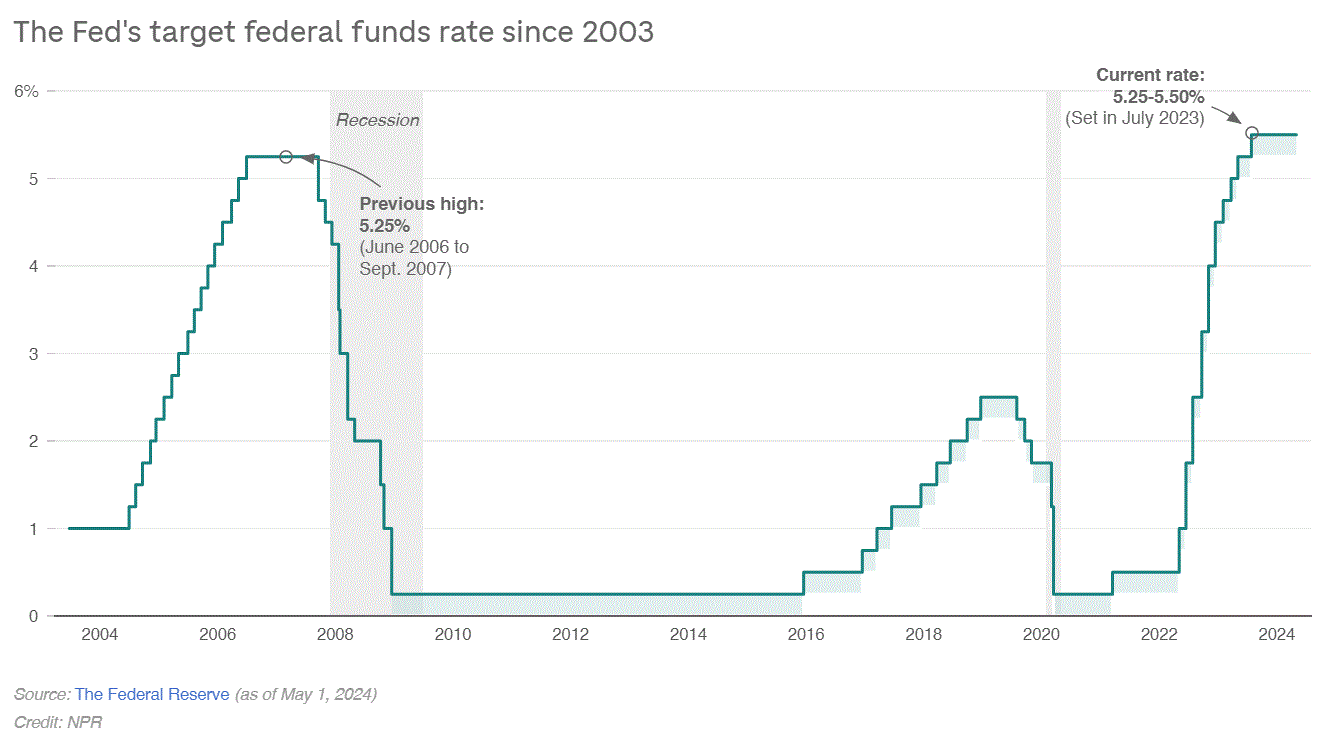As of March 2024, six states (California, Colorado, Illinois, New York, Oregon, Washington) plus D.C. have also expanded fully state-funded coverage to some income-eligible adults regardless of immigration status (Figure 4). Some additional states cover some income-eligible adults who are not otherwise eligible due to immigration status using state-only funds but limit coverage to specific groups, such as lawfully present immigrants who are in the five-year waiting period for Medicaid coverage, or provide more limited benefits.
- California extended state-funded Medicaid coverage to young adults ages 19-25 regardless of immigration status in January 2020, and adults ages 50 and older became eligible on May 1, 2022. The state further extended coverage to income-eligible adults ages 26 to 49 regardless of immigration status in January 2024, making all low-income immigrants in the state eligible for state-funded health coverage regardless of immigration status.
- Colorado uses state funds to provide Marketplace coverage with premium subsidies to individuals with incomes at or below 300% of the federal poverty level (FPL) regardless of immigration status through a section 1332 waiver. Colorado previously provided subsidized plans with $0 premiums through SilverEnhanced Savings, but the program has paused enrollment for 2024 due to funding constraints.
- D.C. provides health coverage to low-income residents regardless of immigration status through its longstanding locally fundedHealthcare Alliance program.
- Illinois extended state-funded coverage to low-income individuals ages 65 and older regardless of immigration status through its Health Benefits for Immigrant Seniors (HBIS) program in December 2020. Coverage also was extended to low-income immigrants ages 42 to 64 regardless of immigration status through the Health Benefits for Immigrant Adults (HBIA) program in 2022. As of March 2024, Illinois has paused enrollment for both the HBIS and HBIA programs due to funding constraints.
- New York extended state-funded Medicaid coverage to individuals ages 65 and older regardless of immigration status beginning in 2023.
- Oregon extended state-funded coverage to all adults who meet income and residency criteria regardless of immigration status as of July 1, 2023.
- Washington uses state funds to provide Marketplace coverage with premium subsidies to individuals with incomes at or below 250% FPL regardless of immigration status through a section 1332 waiver. Starting July 2024, Washington will allow individuals regardless of immigration status with incomes up to 138% FPL to apply for coverage under a state-funded Medicaid-look alike program, subject to funding availability.
In addition to these states, Maryland plans to allow income-eligible individuals to purchase Marketplace coverage regardless of immigration status through a section 1332 waiver without subsidies, pending waiver approval by the Centers for Medicare and Medicaid Services (CMS). Minnesota plans to allow income-eligible individuals regardless of immigration status to enroll in MinnesotaCare, a state-subsidized sliding scale program for low-income residents no sooner than 2025, subject to funding availability.

※ 参考テーマ「





















